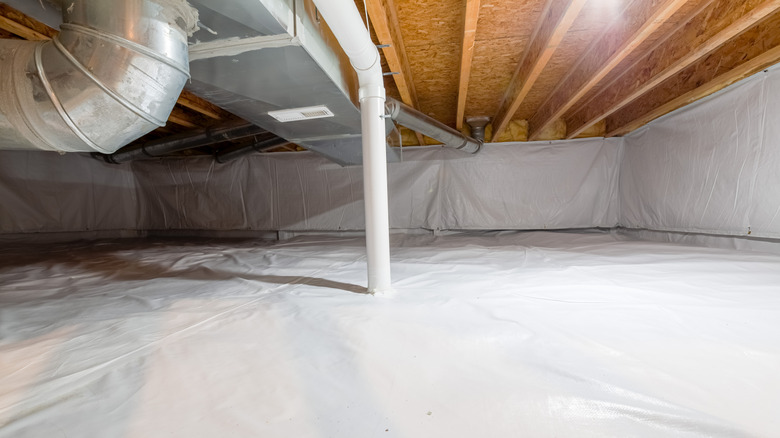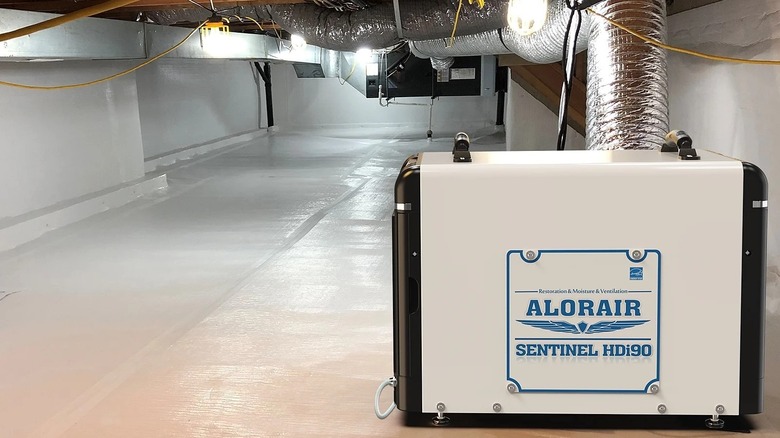Should You Install A Dehumidifier Before Encapsulating Your Crawl Space?
We may receive a commission on purchases made from links.
Crawl spaces are typically neglected areas of a home that go unused and can lead to problems like moisture accumulation and bad air quality. Homeowners looking for a way to protect these areas from mold, pests, and structural damage while increasing energy efficiency have turned to encapsulation. What is crawl space encapsulation? Well, it involves sealing off the area with a moisture-resistant lining. However, managing humidity is critical, and this raises an important question: Should you install a dehumidifier before encapsulating your crawl space?
While dehumidifiers can help control moisture, experts generally recommend using them as the final step after encapsulation rather than as a preparatory measure. The only exception is when encapsulation is delayed due to budget constraints or other factors. Running a dehumidifier temporarily can help manage moisture levels, preventing mold and structural issues until the area is properly sealed. Still, this approach is not energy-efficient and isn't the ideal moisture control method.
Why dehumidifiers are best after encapsulation
Although encapsulation is meant to keep moisture out, it also creates a barrier that traps any moisture already present in the crawl space. Crawl spaces are naturally damp because they are so close to the ground and have limited airflow. And your home's crawl space could be affecting the interior's humidity. If this problem is not mitigated, encapsulation can seal in moisture, leading to mold, wood rot, and structural damage.
Moisture can still accumulate post-encapsulation due to factors like condensation, groundwater evaporation, and seasonal humidity changes. This creates long-term issues that counteract the benefits of encapsulation. While there are ways to lower humidity without using a dehumidifier, professionals recommend installing a dehumidifier after the encapsulation process is complete. The device helps manage the residual and ongoing humidity buildup that might otherwise lead to condensation and mold growth.
On the other hand, using a dehumidifier without encapsulation does not provide significant advantages and could add unnecessary energy costs. Contractors advise a thorough cleaning and mold removal prior to sealing and reserving the use of a dehumidifier for long-term moisture control once the space is encapsulated. Monitoring humidity levels with a hygrometer can help determine whether continuous use of the dehumidifier will be necessary, as the ideal range for crawl space humidity is between 45% and 55%.

